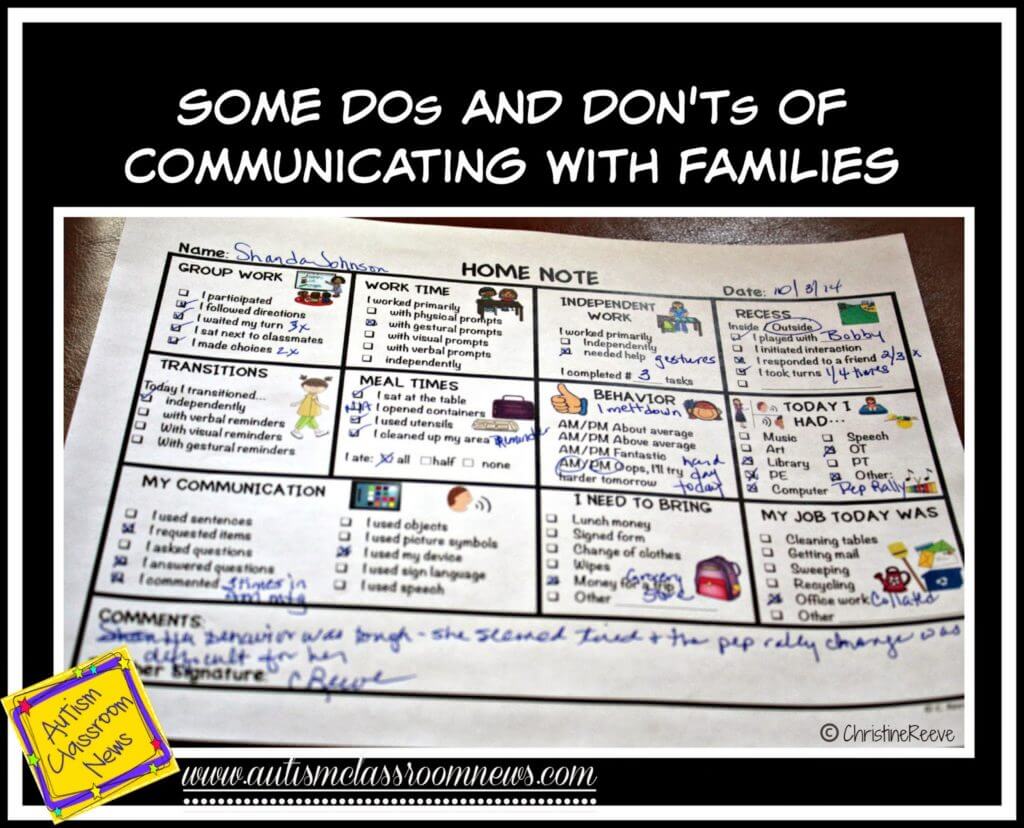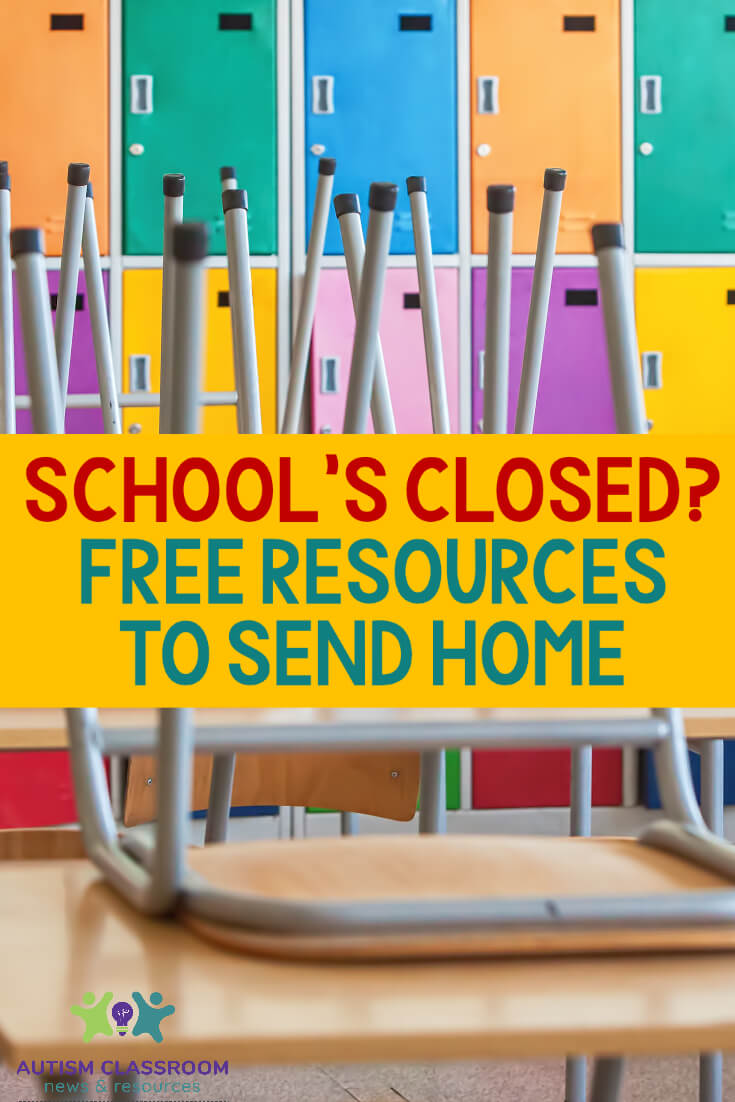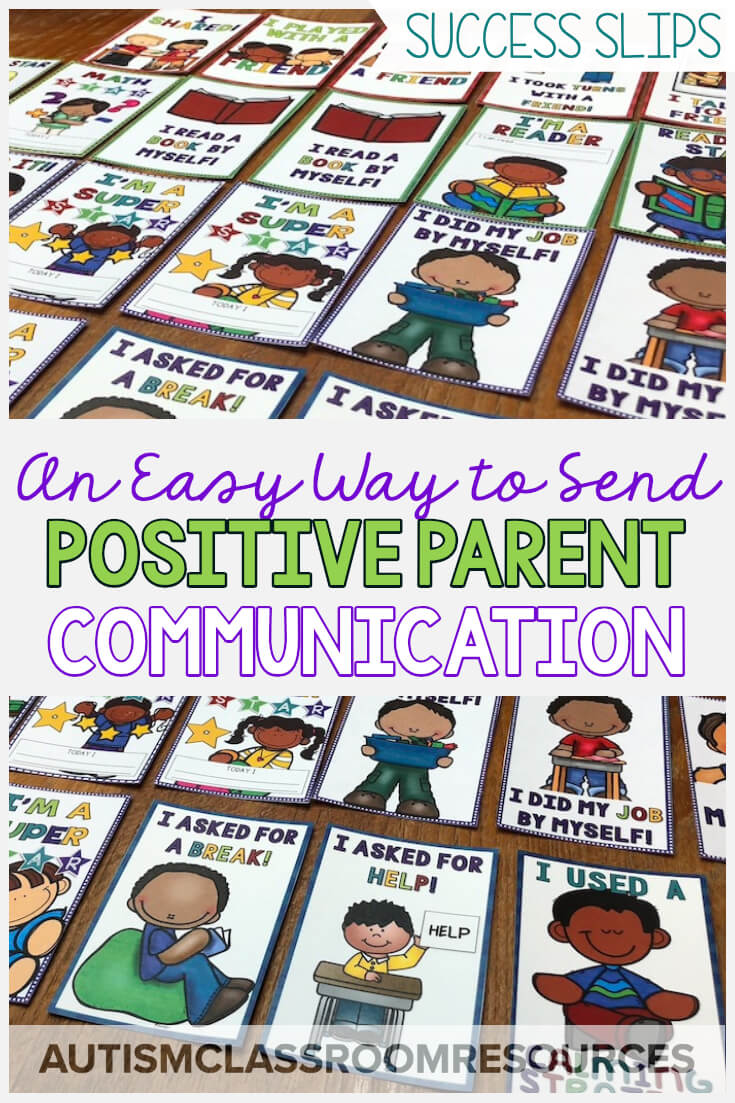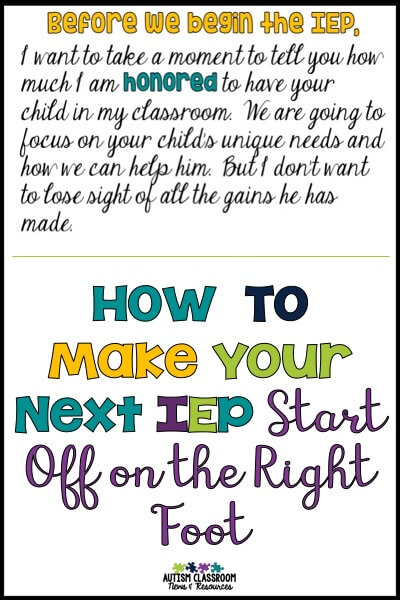In my last post I talked about why communication between schools and families is so important for students with autism and other special needs. Today I want to talk a little about some do’s and don’ts I’ve learned over the years in working with families. This is definitely not a comprehensive list so please share in the comments other thoughts and input on the topic.
1. Ask what information they would like
I know many teachers who are afraid to ask families what information would best help them at home because they are afraid that they will end up writing a novel to every parent with every detail of the day. While it’s true that sometimes parents don’t have the perspective of understanding how busy you are throughout the day, it is sometimes amazing to find out that they often don’t even want all the information we send home. I had a mom tell me once that she didn’t want a note home everyday. She didn’t have time to review it carefully every night and getting it in the backpack at the end of the day meant that the information provided wasn’t always very informative. She asked if the teacher could just send a note home every week with a little more information than was in the daily note. This actually made it easier on the teacher. You don’t know what the parents feel would be beneficial until you ask. If what they are asking is too overwhelming in trying to get everyone out the door, try to come up with something that will work for both of you. It’s ok to say you can’t provide a blow-by-blow description of the student’s day, but sometimes if you can provide a specific type of information it will satisfy what they need to know.
2. Be specific
I know that there is so much to do in a classroom that providing specific feedback about everything that happens during the day isn’t feasible. However, if you can find a way to provide specific information on a regular basis (maybe weekly) about what a student did and didn’t do, or even what the class is working on, it will be helpful to the parents to know what to work on and how to help their child talk about it. Make a checklist or send home data on a weekly basis that provides specific feedback. Send home work samples with quick notes on them that show how much support the student needed to complete it. Find a way to send specific information home so that parents have a strong idea about how a student is doing and what he or she is doing in the 6 to 7 hours they spend with you 5 days a week.
3. Share the good things
It’s so easy in the time crunch of the school day to fall into a habit of contacting families only when there is a problem. If that happens too often, parents start to get that feeling in the pit of their stomach whenever see a note home or see the school phone number on the caller ID. That is not the way to build a relationship with a family. Again, it’s hard with everything else that is being asked of you in the classroom–I know, I get it. But taking the time to do something simple like send home a video, or leave a message for a family at home about something good that happened, or even jot a note telling the family something the student did that he/she has never done before at school will go a long way to building that relationship with them. We are a team working for their child so be sure to share the celebrations.
4. Share bad news personally, not in a note
Let’s say Jim had a very bad day–the worst he has ever had since you have been working with him. Take the time to make a phone call or at least send a personalized email to give information about exactly what happened today and things the educational team is going to try to do to prevent that type of day from happening again. Believe me, parents understand that bad days happen. They have them too. The big question is, what can we do about it. A note telling parents he had a bad day doesn’t tell them what happened specifically and often can make parents feel like they are supposed to fix the problem. In addition, most parents I work with feel horrible if they find out that their child hit someone or bit someone. Sometimes the person they bit feels horrible and sometimes we take it in stride because we understand that sometimes it happens with the students we work with. Either way, letting the parent know what you are going to do about it helps them cope with it and feel confident about sending the child back to school.
Similarly, it might be something that happened to the child that was a problem. For instance, maybe their child was hit by another student or didn’t get picked for a game at recess and it upset him. Once again, by providing specifics and giving information about what we plan to do tomorrow to help support their child, we go a long way to helping them cope with some of the issues are students face.
5. Make copies of what you send home
Home notes and communication with families are a form of documentation about what has been communicated and often of what happened during a day. If you send home your only copy and it doesn’t come back, you won’t be able to answer questions about what was communicated. Further sometimes the information on it serves as data about specific things that will be lost if you send home your only copy.
1. Have paraprofessionals be the primary communicator
This is a hard one because I know for some students, particularly those in general education, a paraprofessional might be the person who spends the most time with the student. However, it’s important that the person communicating with the family is the teacher for a variety of reasons. First, it’s the teacher’s job–not the para’s. Second, the teacher needs to make sure he/she knows what is going on in the student’s day as much as the parent, so if they can’t communicate it to the parent, they are missing information needed to plan the child’s education. Third, paras may have the whole picture of what is going on with a student’s case or an understanding of how it fits into the curriculum or program. The teacher is the one who sees the big picture and should be the primary point of communication.
2. Use a simple good day / bad day system
I once had a parent who referred to this type of system as a smiley face system. I believe her almost exact words were, “If the only kind of notes I get about his school day is a smiley face or a frowny face, I don’t need it.” And she’s right. It doesn’t tell her anything. Most of the time the child gets only one type of face on the note every day. Do we really know what that means?
3. Avoid telling families bad news
In line with this, it’s always important to make sure that your communication home lines up with what is actually going on. Telling a parent that everything is fine when it’s not will only lead to problems down the line. For instance, I once had a student who was sent home for severe behavior and his parents were shocked. When I looked at the communication that had been sent home over time, I was shocked. The communication everyday said everything was great. What the parents didn’t know, because it wasn’t communicated to them, was that the child had been exhibiting increasing problems over time and the incident that led to him being sent home (we can talk about the effectiveness of that strategy in another post) was not “out of the blue” but a cumulation of everything else that had happened in the past weeks. To the parents it was “out of the blue” though because no one had told them.
4. Respond only when the family asks for something
Be proactive. It’s true for behavior, it’s true for your classroom organization and it’s true for building relationships with families. If you are waiting for parents to ask for information you are waiting too long. Send home information and ask for information in return. Lots of teachers complain that parents don’t tell them things like when they change medication or there was a change at home (e.g., dad went out of town). If you aren’t communicating with them, don’t expect them to communicate with you.
5. Expect families to share everything with you
Parents’ lives are just as busy as yours and the reverse is true as well. Sometimes parents will have their own reasons for not sharing information with you. The information about what goes on in their household is private and sharing those intimate moments with someone outside the family is often difficult. In addition, different cultures have different perspectives on what should and should not be shared outside the family. While I really encourage parents to share information about medication changes, in particular, I understand that sometimes they don’t feel comfortable about that because there is a lot of judgment that surrounds those decisions from others. In addition, some parents don’t realize what information it would be helpful to share with you. They don’t have time to write you a novel (and you don’t have time to read it), but sometimes if you can structure for them the information you would like to know AND share with them how it can help you with their child, they will find the time (and you can help them find a format that is easy to use) to share that information with you.
I hope that these thoughts are helpful as we think about how to build effective relationships between home and school. The student’s outcome often depends on their “community” or team working together and sharing information. In the coming posts I will talk about my new set of home-school communication notes but also about other innovative ways to communicate between home and school and the pros/cons from each side. In the meantime, do you have tips (as parents and/or teachers) to share about building effective communication? Please share them in the comments so we can all benefit from them!
Until next time,










